A plaque commemorating the Greek origins of the city on the Quai des Belges in Marseille, April 29, 2024 in Bouches-du-Rhône (AFP / Christophe SIMON)
The Olympic flame arrives in France for the Paris 2024 Olympic Games via… Marseille, at the very place where Greek sailors created Massalia 2,600 years ago, on a stretch of Mediterranean coast naturally protected from wind and waves .
This symbol of unity and peace will enter France through the Old Port, tourist emblem of the oldest city in the country, a protective haven for boats, sheltered from the mistral, the dominant north wind, by several hills.
“There is no equivalent place in the region, the Phocaeans, Greeks from Asia Minor (now Turkey), were very clever to come and settle here”, before continuing to Nice (Nikaïa), laughs Manuel Moliner, archaeologist, chief curator of Marseille’s heritage.
The arrival of the flame on May 8 on the majestic Belem, the last of the large French commercial sailing ships of the 19th century, will therefore reweave “a thread” between Marseille and Greece around the “very Mediterranean values” of “sharing”, insists the mayor of France’s second city, Benoît Payan.
The Greek heritage is barely visible to the naked eye because “Marseille is a city without antiquities” due to destruction/reconstruction, under the impetus of a merchant aristocracy on the very site of the ancient city, today the Panier district, admits Manuel Moliner.
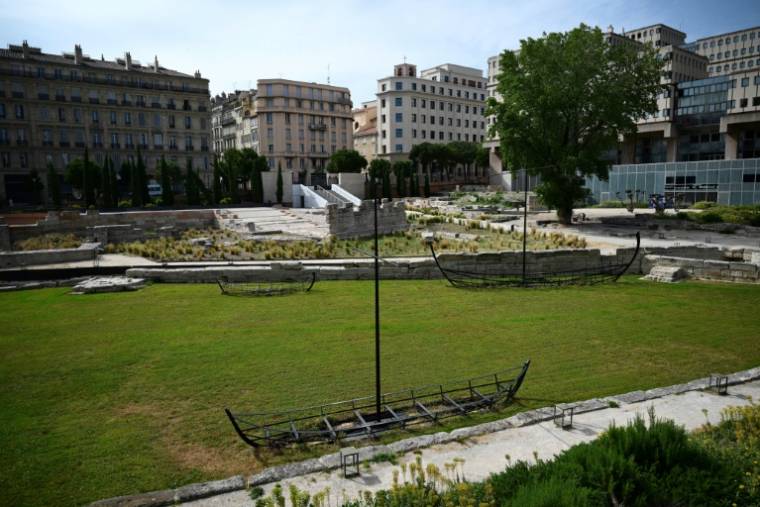
The ruins of the ancient Greek port, April 29, 2024 in Marseille (AFP / Christophe SIMON)
To imagine life during Antiquity, you must go to the Marseille history museum where some exceptional remains were discovered accidentally in the 1960s/1970s, alongside the construction of the first shopping center in the city center.
On a giant model stand three temples, an amphitheater, a commercial and military port, all surrounded by ramparts.
Excavations have uncovered the large capital of a column, the only proof of the existence of the temples.
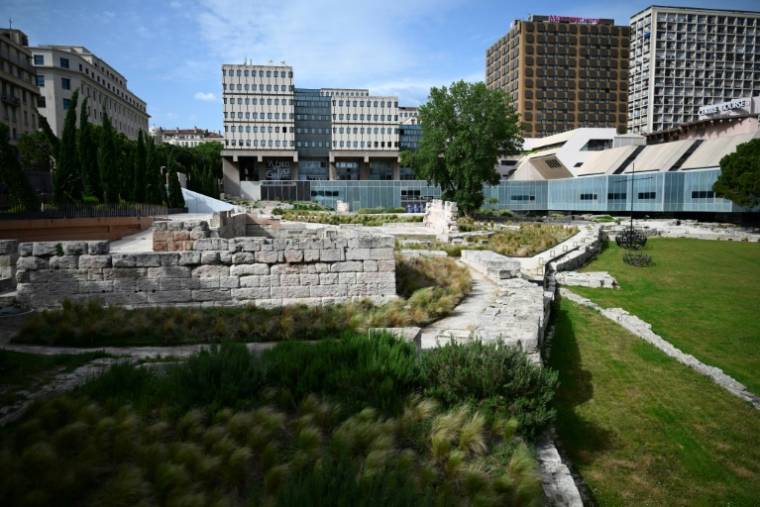
Ruins of the old Port Grac, April 29, 2024 in Marseille (AFP / Christophe SIMON)
A few weeks before the Olympics, the archaeologist shows with delight a block of stone bearing the inscription “Stadion”, found near the current La Major cathedral.
There was therefore a stadium from the beginning in this city which vibrates for its football club, Olympique de Marseille. But where was he? Impossible to say.
Archaeologists are still hoping for THE spectacular discovery, but in this dense city, busy managing many social emergencies, conservation sometimes takes a back seat.
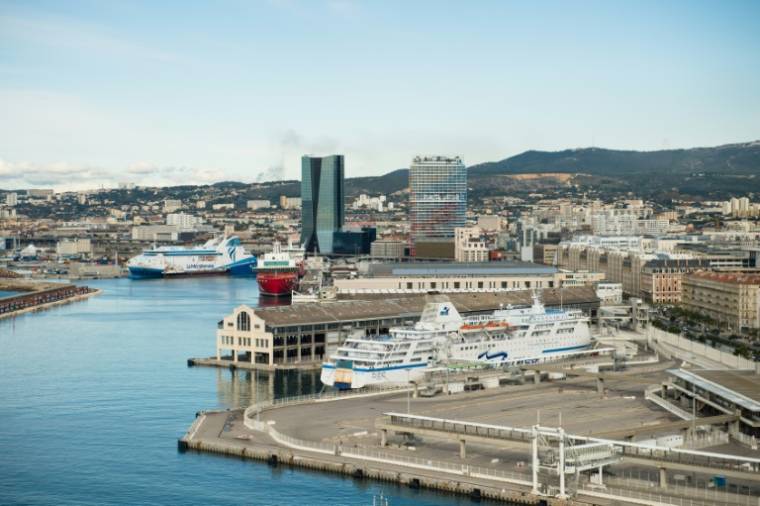
The CMA-CGM headquarters tower (g) in the port of Marseille, November 15, 2019 (AFP / CLEMENT MAHOUDEAU)
The Greek heritage, however, remains powerful in the identity of what in France is still called “Phocaean city”.
Founded by a people of sailors, Marseille has remained one of the most important ports in the Mediterranean and hosts, in an emblematic tower almost 150 meters high, the headquarters of CMA-CGM, one of the giants of world maritime transport.
– Gyptis and Protis, love and crossbreeding –
“Let us also remember that there are all kinds of myths of the founding of ancient cities, but that of Massalia is the only one based on a story of love and crossbreeding,” smiles Sylvain Borzillo, curator of the cabinet of coins and medals of Marseille .
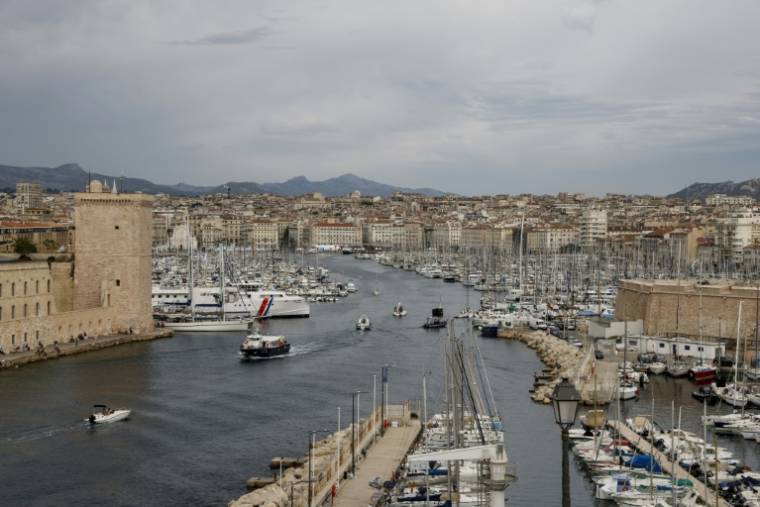
The Old Port of Marseille, September 2, 2021 (AFP / Ludovic MARIN)
Massalia was born from the meeting between a Greek sailor, Protis, and a Gallic princess, Gyptis. His father, the king of the Ségobriges, would have given the territory of the city as a wedding gift.
The legend has never been confirmed but Greek and Gallic kitchen ceramics were found in the same place, proving exchanges between the two populations.
Many Marseillais are attached to this myth which has given its name to numerous places or initiatives in this world city, which has always been a welcoming land and no longer counts its communities: Italians, Comorians, Algerians including the Jews or Armenians.
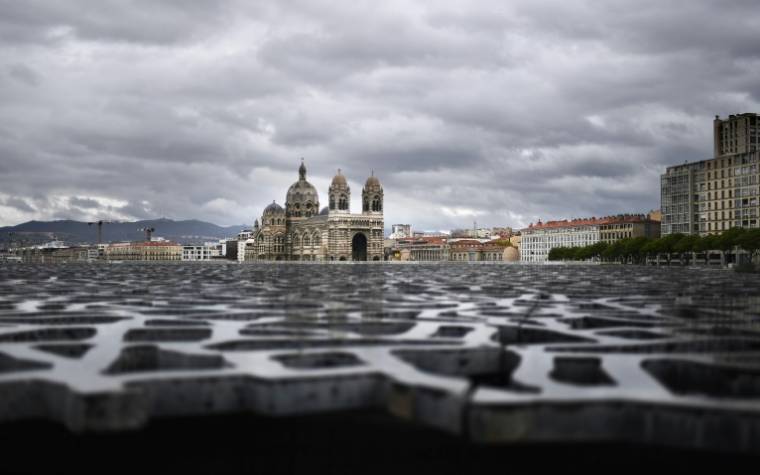
The Major Cathedral in Marseille, April 11, 2018 (AFP / ANNE-CHRISTINE POUJOULAT)
The Greek community is estimated at 12,000 people, the main wave coming from the Ottoman Empire in the 19th and early 20th centuries, traders then refugees.
“A discreet community which tried to blend in with the crowd,” explains the president of the Hellenic Union of Marseille, Pierre Theodorakis.
But as discreet as it is, it tries to keep the culture alive, with Greek lessons, urban walks where the visitor discovers a statue of Homer featured in the latest film by Marseille filmmaker Robert Guédiguian.
And on Sunday morning, the Greek church, the oldest Orthodox building in France, comes alive at mass time.
